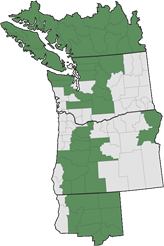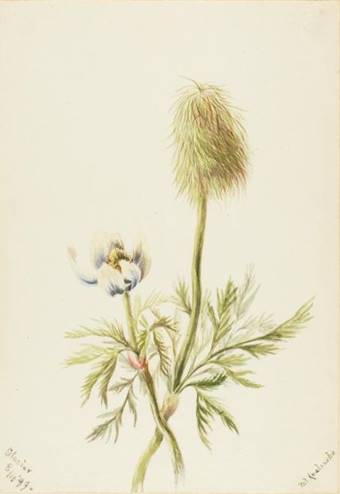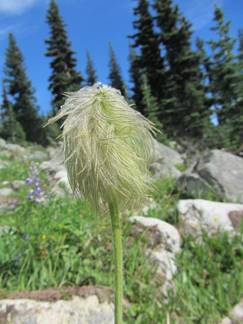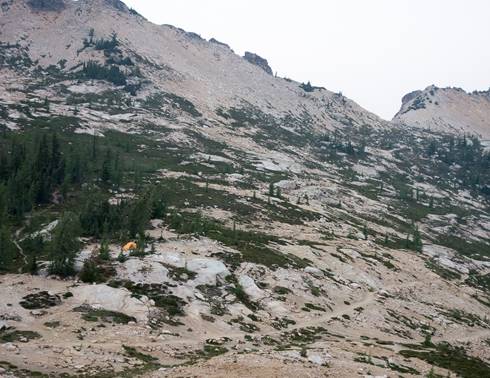Mount Rainier contains the most luxuriant and the most extravagantly beautiful of all the alpine gardens I ever beheld in all my mountain-top wanderings. John Muir, 1889.
Western anemone is a perennial herb with a tap-rooted, woody stem and base found in the subalpine and alpine zone of the western US and Canada. It stands erect and is about 4-23 inches tall. Each plant has a solitary terminal flower with wooly or dense soft-hairs on the stalk.

These plants have a brief time to complete their life cycle and will flower shortly after snowmelt. The flowers are composed of five to seven sepals that are white, soft purple, or a white-bluish. It is most often found on gravely slopes and in moist meadows.
The flowers are short-lived, and are soon replaced by a feathery white seed head. Attached to each seed is a long feathery strand. When still on the plant, it almost appears as a blond wig.

Thus, the plant is also known as towhead baby, old man of the mountain, or hippie-on-a-stick. My spouse, Connie, calls them Cousin Itt Flowers – Cultural Reference

This genus, Pulsatilla, has been used medicinally for ages and one reference notes that “Its best influence is exercised in women of blond temperament…..” Why? Who knows – maybe because of the resemblance to the seedhead? The common name Pasque refers to the Easter or Passover blooming time of other species in the genus, and to the purity of the white sepals. Pulsatilla – Latin for sway, as the flowers move in the wind and occidentalis – Latin, situated in the occidental, or the west.
The flower was first described by Sereno Watson in 1876. Watson was a Yale trained biologist who became the lead botanist for the Clarence King Fourteenth Parallel Expedition, which explored areas from California to Wyoming. Among other items, such as the becoming the first director of the U.S. Geological Survey, King found time to write a number of scientific books and one titled Mountaineering in the Sierra Nevada.
Last week I was backpacking in the North Cascades with my 15-year-old nephew, Will, from PA. It was his first time camping and first time out and about in the alpine zone. So it was fun answering his questions about plants and critters and the general setting. I noticed some pasqueflowers at lower elevation that had already lost their seeds and was hoping we would come across some higher up still intact. We did.
At about 6,500 ft., just below Cutthroat Pass where we would spend the night, we came across a good swath of wildflowers including pasqueflower in seed. Will was curious about the plants until I mentioned that we might get lucky and hear some wolves howl in the evening.
He did a quick pivot and said – “You said there weren’t any wolves up here” – “
No I didn’t”. I replied
He pushed back and I said– “…well, if I did, that’s not what I meant”.
We returned to looking at flowers but I don’t think that was what was on his mind.


